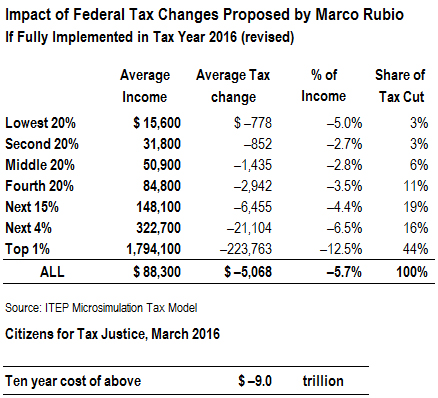Voters went to the polls in a number of state and local elections this week, with lots of implications for tax policy. This rundown covers the burning ballot outcomes and election results that followers of state policy should know about!
***
|
Click Here to sign up to receive the |
Washington state voters approved Tim Eyeman’s Initiative 1366 with 53 percent of the vote. The measure mandates an automatic decrease in sales tax revenue by $1 billion unless the legislature agrees to refer a ballot measure to voters that would require a supermajority to raise taxes. As we noted in a previous blog post, Initiative 1366 is a disaster for the state. Legal challenges to its legitimacy are sure to follow, but at the moment eyes are on state legislators and what they will do to avoid both the revenue loss and the supermajority requirement.
Voters in Texas approved two proposals that will impact road and school funding. Proposition 1, which increased the property tax homestead exemption from $15,000 to $25,000, will cost schools in the state at least $1.2 billion over the biennium. Homeowners will keep $126 annually, on average. The measure passed with 86 percent of the vote. Proposition 7 diverts up to $2.5 billion a year in sales tax revenue from the general fund to the State Highway Fund beginning in 2018. It passed with 83 percent of the vote.
Ten out of seventeen counties in Utah passed a ballot initiative for transit funding, though the measure went down in defeat in the state’s most populous counties, Salt Lake and Utah. Proposition 1 implements a local sales tax with revenue split between transit providers, cities and counties.
Voters in Kentucky elected Republican Matt Bevin governor in an upset over challenger Jack Conway, the state’s attorney general. Bevin, a businessman often at odds with his own party’s mainstream, has pledged to end Kentucky’s successful healthcare exchange and is opposed to Medicaid expansion. He has also called for corporate and personal income tax cuts and for the repeal of Kentucky’s inheritance tax. Bevin’s election is likely to move Kentucky tax policy in a less fair and unsustainable direction.
Mississippi voters easily reelected Gov. Phil Bryant, who faced token opposition from Robert Gray, a long haul truck driver. Lt. Gov. Tate Reeves and House Speaker Phil Gunn, both also reelected, were responsible for a flurry of tax bills last session that would have lowered income taxes and eliminated the corporate franchise tax. At one point, lawmakers considered eliminating the income tax entirely. These efforts failed because backers could not gain a supermajority vote for their changes; now, Republicans are just one vote away from a supermajority. Expect more of the same during the state’s next legislative session.
In a bright spot, voters in Seattle, WA and Maine approved ballot questions to limit the influence of money in politics and to increase the power of small donors. Maine voters passed by 55 percent a proposal to update their public elections system. Candidates who opt for public funding will now receive additional funds if super PACs spend big for their opponents, and the transparency rules for independent spending have been tightened. The question also requires the legislature to scale back or repeal some business tax breaks in order to fund public financing. Voters in Seattle passed by 60 percent a new concept called “democracy vouchers.” Each citizen will receive four $25 publicly-funded vouchers to pledge to candidates of their choosing. The Seattle initiative also lowered campaign contribution limits, increased ethics enforcement, and banned contributions from lobbyists and city contractors. Hopefully, these measures will make lawmakers more responsive to the public on matters of tax fairness rather than entrenched interests.








 ship for an Irish passport in a process known as a corporate inversion.
ship for an Irish passport in a process known as a corporate inversion. Sometimes, ranking near No. 1 is not a badge of pride. The U.S. ranks as the
Sometimes, ranking near No. 1 is not a badge of pride. The U.S. ranks as the  For the die-hard fans who lined up to purchase Apple’s latest iPhone last month, it’s hardly news that the California-based company still lives up to its reputation for technological innovation. The world’s No. 1 smart phone manufacturer last week released its annual
For the die-hard fans who lined up to purchase Apple’s latest iPhone last month, it’s hardly news that the California-based company still lives up to its reputation for technological innovation. The world’s No. 1 smart phone manufacturer last week released its annual